You’ve probably wanted to have straighter teeth for a while, but at this stage in your adult life, metal braces are not a choice you are willing to consider. Invisalign® offers you the convenience and flexibility to live life without the hassle associated with other types of treatment. From the moment you start Invisalign treatment, you’ll enjoy a better smile every day.
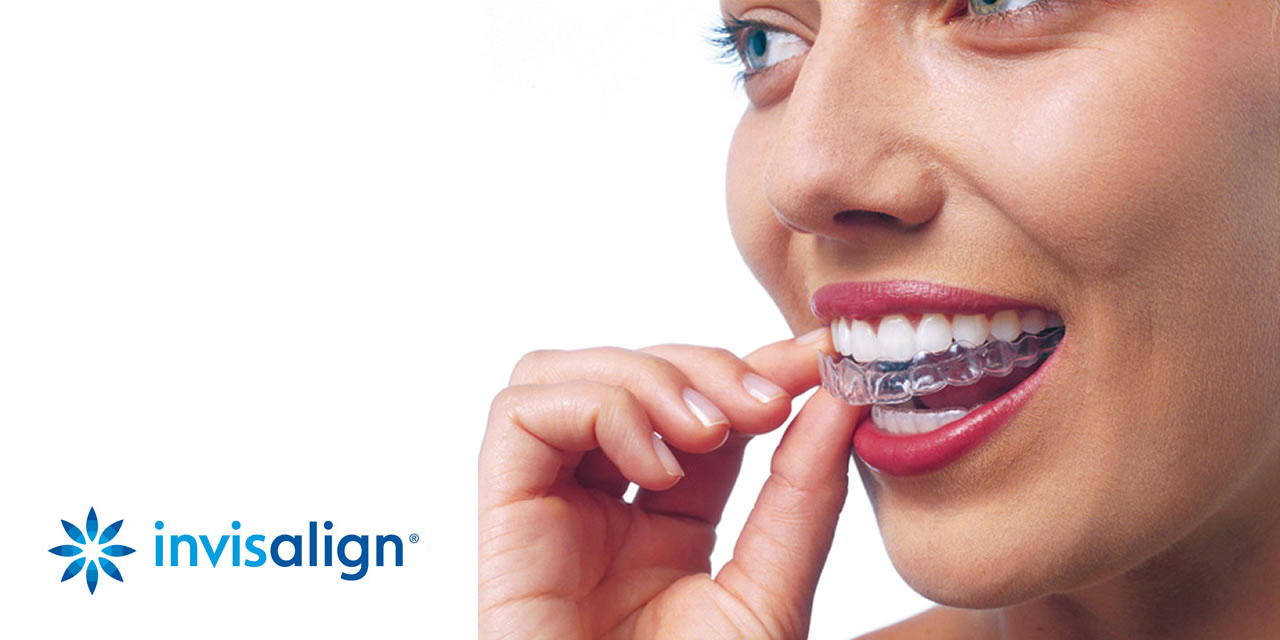
Clear aligners are transparent, removable trays used to correct teeth positions as an alternative to braces. The treatment is ideally rendered by the orthodontist who is specifically trained in clear aligner systems and has experience by treating a good number of cases.
Currently there are many international clear aligner companies providing their services in India, Invisalign being the most prominent and technologically advanced of all.
TREATABLE CASES
They are effective for correcting conditions like spaced or crowded teeth, openbite, overbite, underbite or crossbite problems. However they cannot correct discrepancies of the jawbone. They can also realign teeth in patients who have experienced a relapse after fixed orthodontic treatment.
Here are some of the main conditions Invisalign currently treats. But if there is a specific dental problem that you do not see addressed here, please contact your Invisalign Provider for more information to see if Invisalign is right for you.
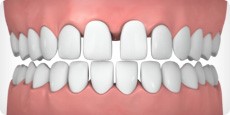
GAPPED TEETH
Gaps between teeth can occur with abnormal continued growth of the jawbone. Missing teeth can also cause the surrounding teeth to shift due to the extra space, creating gaps in your teeth. Spacing issues and gaps between teeth can lead to gum problems (due to lack of protection by the teeth), periodontal pockets and increased risk of periodontal disease.
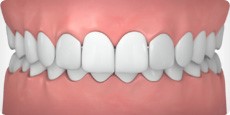
OVERBITE
What people commonly refer to as an “overbite” is known to dental professionals as “overjet.” It occurs when the upper teeth bite over the lower teeth. It’s typically caused by genetics, bad oral habits, or overdevelopment of the bone that supports the teeth. This can lead to gum problems or irritation, and/or wear on the lower teeth, and can cause painful jaw and joint problems.
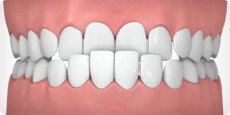
UNDERBITE
Underbite can occur when the lower teeth protrude past the front teeth. It’s usually caused by undergrowth of the upper jaw, overgrowth of the lower jaw, or both. It can also be caused by missing upper teeth. This can prevent the normal function of front teeth or molars, which can lead to tooth wear. It can also cause painful jaw and joint problems.

OPEN BITE
Open bite often occurs when some teeth are unable to make physical contact with the opposing teeth for a proper bite. Most often caused by a genetic abnormal jaw structure or excessive thumb-sucking, an open bite can cause poor or painful chewing, and even speech impairment. It can also lead to greater issues like thermo-mandibular joint disorder (TMJ).
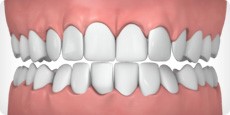
OVERLY CROWDED
Teeth crowding occurs when there is simply a lack of room within your jaw for all of your teeth to fit normally. When left untreated, overly crowded teeth can get worse over time, and result in severely crooked teeth. This crowding can lead to plaque accumulation, tooth decay and an increased chance of gum disease.
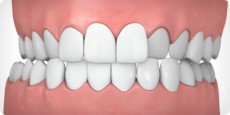
CROSSBITE
Crossbite can occur when the upper and lower jaws are both misaligned. It causes one or more upper teeth to bite on the inside of the lower teeth, and can happen on both the front and the sides of the mouth. This can cause wear of the teeth, gum disease and bone loss.
PROCEDURE FOR TREATMENT
The treatment involves the following steps:
1. Consult the Invisalign clear aligner specialist
During the consultation, your Orthodontist will examine your teeth and determine if Invisalign is suitable for you or not. If yes, you can discuss about the treatment, other options available, their pros and cons as well as your payment options.
This will also be your opportunity to ask any questions or concerns about Invisalign.
2. Customisation of your Treatment Plan
Once you are ready to go ahead with the treatment, your Orthodontist creates a treatment Plan for you. Your Orthodontist will take x-rays, photographs and impressions of your teeth and send them to Invisalign company along with your customised treatment plan. Invisalign will use these to create ClinCheck, a software program showing digital 3-D images of your teeth movements before and after the orthodontic treatment and send it back to the Orthodontist in 7-14 days for approval.
From these images, you can view the exact movements of your teeth, the final result and the approximate length of your treatment. Since every case is unique, the treatment duration can range from as low as 4 months to greater than 2 years, directly proportional to complexity of the case.
3. Fabrication of your aligners
Your dental impressions are scanned with CAD-CAM (computer-aided-design and computer-aided-manufacturing) software and a series of stereolithographic models are made for stages between the current and desired teeth positions. Aligners are fabricated with a BPA-free thermoplastic material. Each aligner moves teeth by 0.25 to 0.33 millimeters. So 6 to 50 plus aligners may be needed to bring the desirable teeth movements.
4. Delivery of the aligners
You will receive your set of Invisalign aligners in about 4-5 weeks from the Orthodontist and start wearing them as per the instructions. For promised results and a timely outcome, aligners should be worn for 20 to 22 hours per day, every day. The aligner is removed for brushing, flossing and eating.
The aligners are changed sequentially every 2 weeks. To monitor your progress, the Orthodontist may recall you every six weeks or so. You may also need filing or removal of some teeth to make space for the teeth to move, as discussed on your initial consultation. For complicated tooth movements, small, tooth-colored composite attachments are fixed temporarily onto certain teeth and are removed after completion of treatment.
5. Completion of treatment
Congratulations! You have reached the end of treatment and it is time to reveal your new smile! Remember, a retainer is a must to maintain the tooth positions achieved.
ADVANTAGES OF CLEAR ALIGNERS
- They are virtually invisible, so much so that most people may not even notice you’re wearing them.
- These aligners are smooth and comfortable, and won’t prick your cheeks and gums like traditional braces.
- You can remove them to eat and brush your teeth, so there are no diet restrictions to be followed and it is easier to clean.
- If your profession involves a lot of public interaction or travelling, the aligner treatment is not only convenient, but in some cases the only practical option as the frequency of checkups can be planned ahead as per your itinerary without having to interrupt and delay treatment.
DISADVANTAGES OF CLEAR ALIGNERS
- Not all malocclusions are treatable effectively with clear aligners, for example complex or skeletal discrepancies are better treated with traditional braces or orthognathic surgery.
- The aligners will not work well if not worn as prescribed. Patient compliance is critical for treatment success.
- Compared to traditional braces and some indigenious aligners, Invisalign is made using advanced cutting-edge technology, perfected with years of research and development and hence is priced more. However since it is a customised treatment plan unique for every patient, it is offered for either upper or lower teeth or both and for simple or complex cases or for adults or teen patients, and cost varies accordingly.

